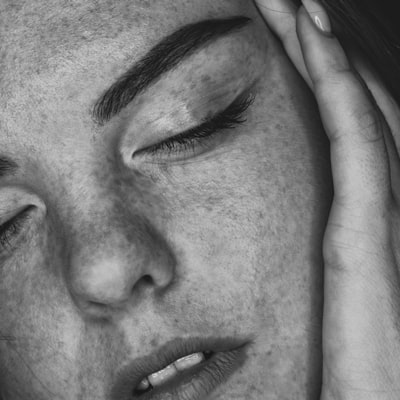How to Perform Trigger Point Massage at Home


In order to provide a pain-relieving effect, trigger point massage uses large strokes and more intense pressure. Your trigger point is first be located. Once that's done trigger point massage therapy will be customized for the pain you are experiencing. These tips will help you apply trigger point massage at your home.
Trigger points are areas of rigidity
Trigger points form for various reasons. These can be caused by poor posture or repetitive usage. They may also occur as a result of physical or emotional stress. Trigger points may develop in almost all adults at one point or in another way. Research has shown that 95% of adults who are pain free have trigger points in the shoulder muscles. On average 16 trigger points were identified within the shoulders of blue collar workers and office workers. The trigger points could be present in children's shoulders as well.
Trigger points could be caused by repeated usage or the use of medications. Symptoms of a trigger point can include pain in a small area, changes in thickness or the accumulation of fluid. It could also signal the presence of a more serious issue, such as myofascial or chronic pain syndrome. These symptoms can be caused by trigger points that are too high, which could lead to myofascial or chronic pain.
They result from the excess accumulation of two chemicals
The basic concept is that trigger points are places of rigidity in body tissues. These spots are also known as knots or nodules. These spots are typically found in the muscles but can also be found in fascia, periosteum, and ligaments. Knots or nodules develop due to the excessive concentration of two chemical substances in the muscle fibers. In other words trigger points cause an absence of oxygen within the muscle fibers that causes it to constrict and become hard and knotted.
Trigger point massages aren't understood in detail, but the mechanism behind them is similar. The two chemicals, nitric oxide and p-adenosine, are responsible for the painful symptoms associated with trigger points. When trigger points are able to be "flushed" by massage but the tissues surrounding it may be replaced with waste metabolic products. The release of trigger points is similar to running a car inside garages that are closed. But running the car for a couple of minutes does nothing to help It's the same when it comes to trigger points massages.
They can ease discomfort
Trigger point massages are a deep tissue massage that helps release muscles that are tight. The majority of pains and discomforts originate in these trigger points. They could be a source of pain for different areas. Trigger points on the neck, for example may result in headaches. Massages for trigger points are carried out by a certified massage therapist in order to relieve discomfort caused by repetitive movements, injuries, and the overuse.
Trigger point pain can cause muscle stiffness and aches. The affected limbs might also feel stiff, weak or heavy. While there isn't a identified cause the condition is often associated with intense exercises and positions. In addition the pain can extend to other parts of the body. Hot showers and massage can offer temporary relief. However, they might not be enough to ease the pain for good.
It is possible to do them at your home
With a release device trigger point massages are an excellent way to alleviate pain that is caused by the root cause of your issue. Trigger points refer to muscles which become painful due to their tendency to be short (e.g. the back). For about 10 seconds, apply 75% pressure on an trigger point. Repeat this process for several minutes, and your trigger point should ease. This procedure can be repeated several times.
This massage is a great way to quickly reduce muscle pain and is cost-effective. A tennis ball or foam roller can assist you in performing the massages. Getting a trigger point massage at home can be a great way to give yourself a free, effective massage on a regular basis. Trigger point massages may not be widely accepted by medical professionals, but they can be done by anyone who has the appropriate tools.
They may cause discomfort.
Trigger points result from repetitive muscle contraction. 익산출장마사지 These are tiny, sensitive places that limit the flow of blood and cause pain. These areas are usually found beneath the skin and can be uncomfortable. Massages that use pressure to release trigger points may relieve pain and discomfort. Trigger point massages might not be relaxing but they can leave you feeling revitalized and rejuvenated. They are not for the weak of heart.
The discomfort that trigger points is often exacerbated through activity. It may cause headaches, vertigo or numbness or pain in the face. To reduce pain, patients might develop compensatory patterns of movement. Since trigger points can be easily missed, a person may not be aware that they have them. It is possible that they experience unusual sensations when touched or the pain in one of their bodies.
Some medical conditions make them unsuitable
Some medical conditions make trigger point massages unsuitable. These are usually site specific, but can be caused by blood clots as well as conditions that affect the lymph system. It is advised to wait until the problem is resolved before undergoing massage. Some conditions, like osteomyelitis, may develop locally but spread throughout the body. The body's temperature can be elevated, which is the most common cause for these ailments. Massages during these times are not advised to lower the risk for infections.
Some people with certain medical conditions are able to get trigger point massages. Trigger point massages might not be suitable for people who've had recent surgery, tattoos, or are currently taking blood thinners. Massages using trigger points may not be appropriate for people who suffer from severe osteoporosis or atherosclerosis. You should also consult your physician prior to getting this massage if you are taking any medication that thins the blood.
